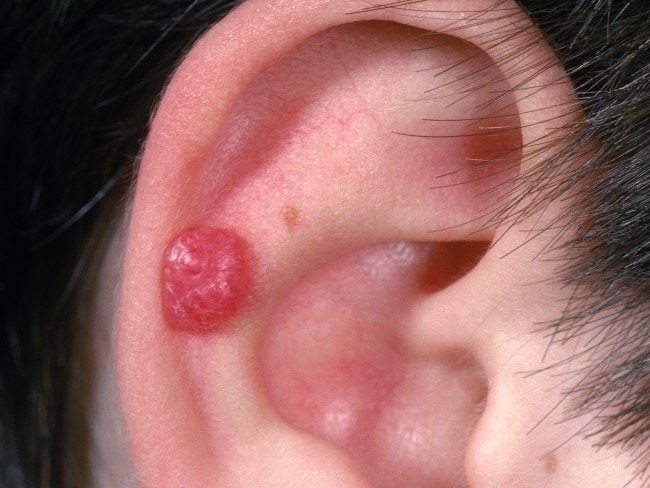Published on
Differential Diagnosis
- Dermatofibroma
- Lobular capillary hemangioma
- Melanoma
- Spitz nevus

Diagnosis
The lesion shown in the photo was diagnosed as a Spitz nevus. Spitz nevi, also known as spindle and epithelial cell nevi or benign juvenile melanoma, are benign melanocytic nevi that occur most commonly in childhood and adolescence. Rarely, congenital Spitz nevi present at birth.
Learnings/What to Look for
- Spitz nevus lesions are often red, pink, or (less commonly), dark brown, and appear as well-defined, smooth, firm, flat- or dome-shaped nodules and papules often <6 mm in diameter
- The majority of lesions are solitary, but rarely they can be multiple and widespread (eruptive disseminated) or localized (agminated) in one area
- The importance of these lesions lies in their frequent histopathologic confusion with melanoma. Spitz nevi represent the benign diagnosis within a spectrum, which extends to contain increasingly atypical features in atypical Spitz tumors and Spitz melanomas
- Lesions can develop slowly or appear quite rapidly. Without excision, lesions may remain stable for years, evolve into compound nevi, flatten over time, or involute spontaneously
Pearls for Urgent Care Management
- Benign lesions do not require treatment but should be monitored for changes. Measuring and photographing the lesion is useful in this regard
- Referral to dermatology is recommended for nevi that exhibit concerning features or new changes
Acknowledgment: Image and case provided by VisualDx (www.VisualDx.com/JUCM).
A 6-Year-Old Boy with a Lesion on His Ear
1 2
